June 22
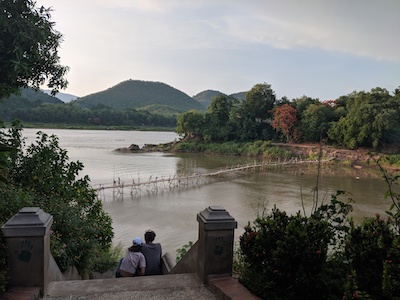
Research continues as usual, but last weekend I got a short break when I left Cambodia for Laos, specifically the city of Luang Prabang. Last Tuesday was a national holiday in Cambodia (specifically the Queen Mother’s Birthday), and so I took Monday off and had a four day weekend from work. Luang Prabang is the ancient capital of the Lao Kingdom, currently the second largest city in Laos, and I’ve heard it’s a popular spot to visit. It also happened to be up in the mountains and supposedly gets cooler weather than the lowlands where I’ve been living, which may have factored in to my excitement.
Laos is considered the least developed country in the region (with the possible exception of Myanmar) and is also one of the smallest, and the only one landlocked, with the Mekong river as its only major water source. Even though I’ve been living in Cambodia, which is relatively underdeveloped, Laos was somehow even less developed. The roads were quiet, nothing like the packed streets of Phnom Penh, with a few cars and motorbikes around but no real traffic, a rarity in southeast Asia. The airport consisted of a building that I’m fairly sure is smaller than my old high school, next to a tarmac where the planes (all of which were propeller planes) would pull up and park and let us off. It felt closer to a large bus station than an international airport connecting to 5 countries. Still, immigration took 10 minutes and the staff was genuinely friendly. I’m fairly sure Luang Prabang is the tourist center of Laos, and also the second largest city in the country with roughly 60,000 people, and so the people here are very used to international travelers.
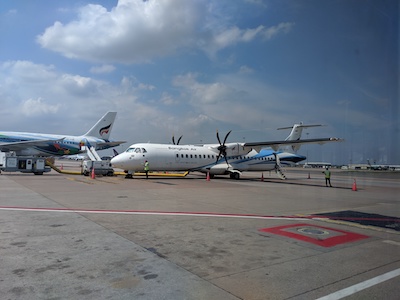
I arrived Saturday afternoon, which gave me plenty of time to walk around the relatively small old town of Luang Prabang. Situated above where the Nam Khan River flows into the Mekong, there has been a city on this ste since at least the 7th century AD. Right at the edge of town, a beautiful park is located right where the rivers come together, and it ended up being my favorite place of the whole trip. Luang Prabang is, in fact, located up in the mountains at an elevation of about 1,000 feet. These mountains are technically known as the Luang Prabang range, and are considered foothills of the Himalaya. While they aren’t all that high they are breathtakingly beautiful, as I hope you can see from some of the terrible photos I took through the windows of the plane.
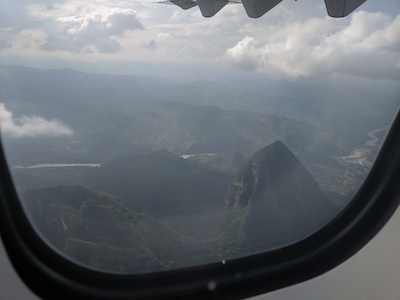
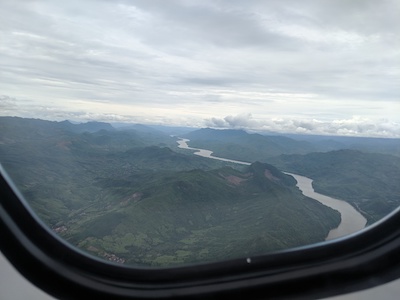
Luang Prabang itself is also beautiful, and the Old City is a UNESCO World Heritage Site. The city contains 33 different temples, all built during the height of the Lao Kingdom, and they included some truly beautiful architecture, along with some friendly monks. One of the most popular tourist attractions here involves the monks. They live entirely on donated food, and so every morning they’ll proceed down the streets of Luang Prabang, gathering food from the locals in exchange for providing blessings. Since Luang Prabang is such a tourist town, it’s become a huge attraction for people to view these processions. I decided not to participate for two reasons: first, they do this at sunrise, which in Laos is at 5:30 AM, and secondly because they practice this morning tradition all over southeast Asia. During my morning commute in Phnom Penh, I always see monks walking around the neighborhood, gathering donations in exchange for chanting a few prayers. Still, seeing it anywhere is a nice glimpse into the daily life and practices of the people here, most of whom continue to be very religious. Cambodia and Laos are both centers of Theravada Buddhism, which was originally developed in Sri Lanka and incorporates some elements of Hindu mythology. Something like 95% of the population in both these countries is Theravada Buddhist, and religion plays a huge part in daily life.
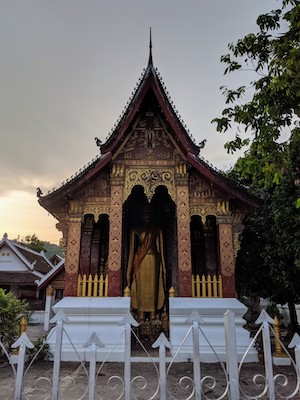
Moving on, the town is basically made up of these Buddhist wats alongside French colonial buildings left from the French occupation. Like most of southeast Asia, Laos was colonized by the French, who left quite an impression on the food and architecture. The buildings themselves are beautiful, but it’s a bit surprising to me that they’re still standing. Ever since the colonial period, Laos has had a long and unstable history. They gained independence from France and immediately fell into a Civil War between the royal Lao government and the communist faction that lasted until 1975, when the communist forces won and declared Laos a socialist state. The Civil War period is what’s known as the Secret War in the USA because our CIA was actually involved, although the government denied it at the time. The war was kept secret because it was essentially part of the Vietnam War but the Geneva convention had declared Laos a neutral country, and so neither Vietnam nor the US were supposed to be in Laos, even though both sides had forces there.
The biggest legacy of this period was the intense bombing campaign the US carried out in southern Laos. The US dropped so many bombs during that period that Laos is the most bombed country in the world. Significant portions of the country are still covered in unexploded bombs, and it’s still not unheard of for people to lose limbs or even their lives to bombs buried in the countryside. I asked the man who ran the bed and breakfast I was staying at what he thought of all this, and one of the first things he mentioned was when Obama came to the country in 2016 and pledged more US aid to help clean up the unexploded ordinance. I vaguely remember hearing about this when it happened, but from the way my host spoke this one act of Obama's was extraordinarily important to the people of Laos.
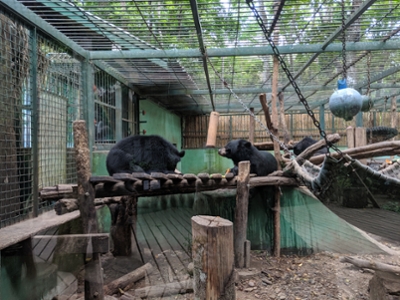
so the feeding area is basically a jungle gym.
Enough of the history lesson. I actually spent most of my time there just relaxing and reading in little coffee shops, dozens of which dot the town. Coffee grows very well in Laos, and the locals like to take it with incredibly sweet condensed milk. With a cup of that and a good book, I was set. I did take a short trip to the mountains outside of town to visit a beautiful little nature reserve. The reserve is located around Kuang Si waterfall, which is absolutely beautiful, and is also home to a sun bear sanctuary. The bears are native to this region, but are often hunted for their body parts to be used in traditional medicine and are very endangered. The sanctuary allows them a safe area in the forest to live. A lot of the area around Luang Prabang is rapidly developing around tourist resorts, and so it was so nice to be in a part of the mountains that’s relatively unspoiled.
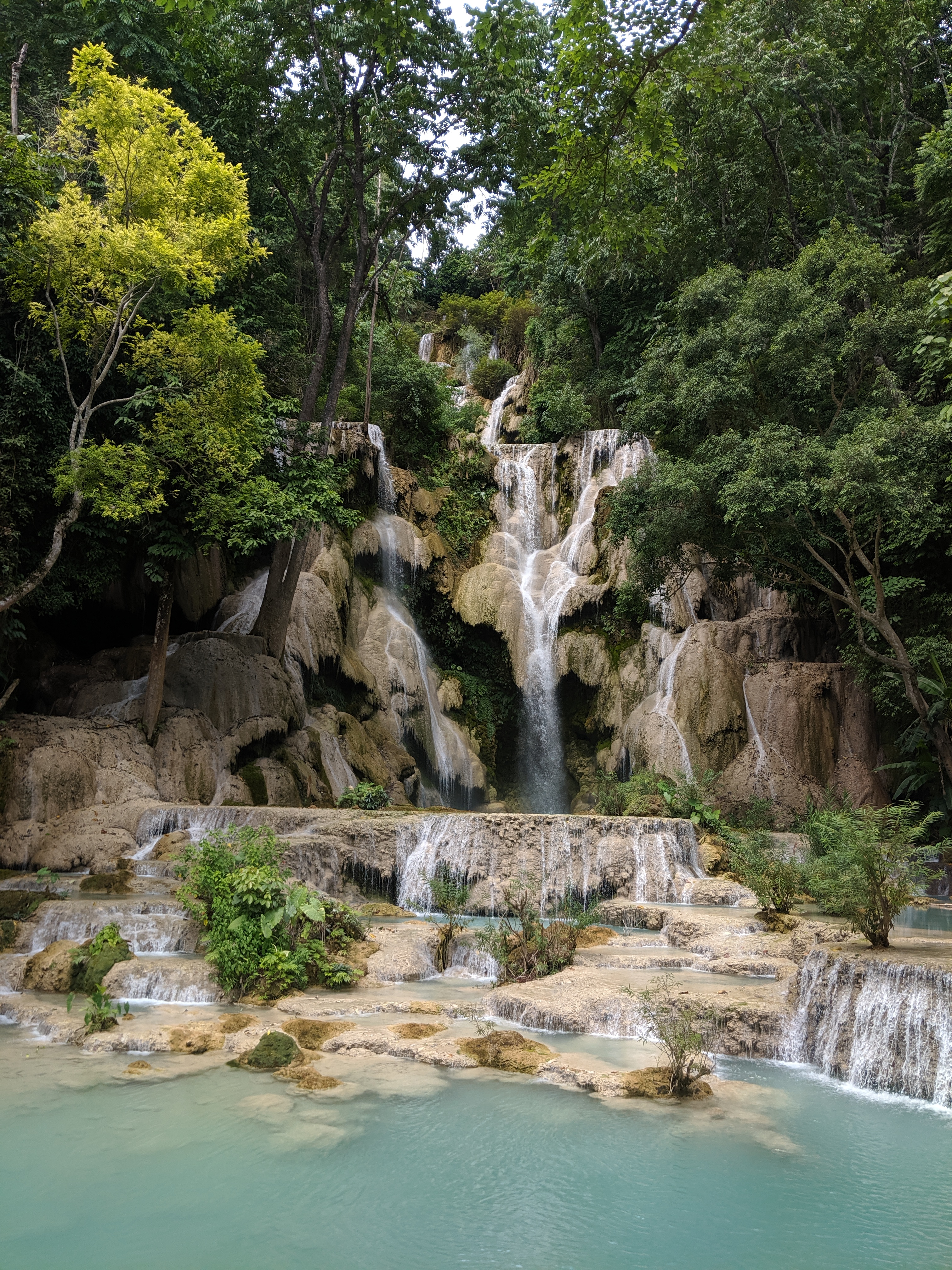
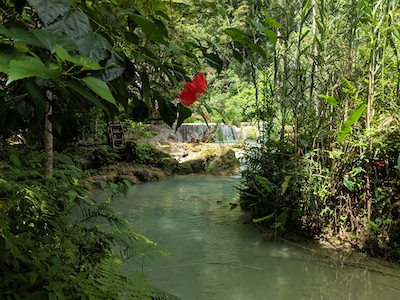
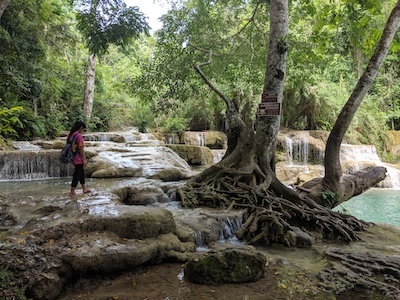

Just a few of the many photos I took at Kuang Si Falls.
I only had a few days in Luang Prabang, but I’m so glad I got to see it. Like Cambodia, Laos is rapidly developing thanks mostly to Chinese investment, and so it’s hard to say what the country will look like in a few years. Still, many of the people I talked to were proud of their country and wanted to develop it while retaining their traditional culture. I'm hopeful that they'll continue to have a say in the direction their country goes, and that Laos can develop sustainably.